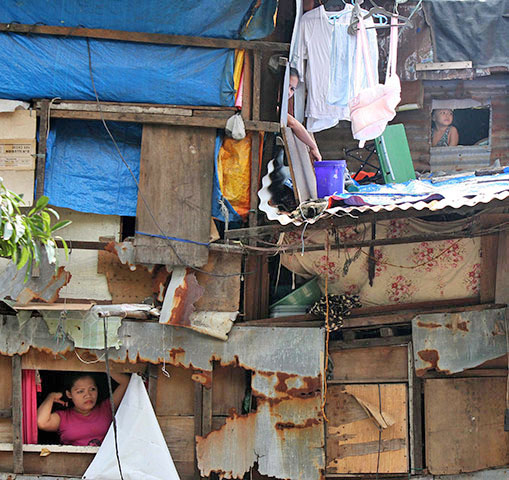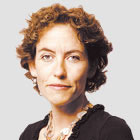
The long, steep path to equality From the favelas of Brazil to Filipino slums and refugee camps in Afghanistan, billions of people are seeing change and improvement as countries strive to meet the ambitious UN millennium development goals. After 10 years of action, how much closer are we to a world that is fair for all? |

http://www.guardian.co.uk Equality is the one item nobody wants on the UN agenda next week
In less than a week Barack Obama will be sitting down with 191 heads of government in New York to review progress on the most ambitious programme the UN has ever attempted. In 2000 the world signed up to eight goals which included halving those living in poverty, universal primary education, and reducing by two-thirds the number of children dying before they reach their fifth birthday. The millennium development goals are a fabulous, extraordinary wishlist. Next week all the rhetoric will be about galvanising commitment, urging one last heave in the final five years to the deadline. Ahead of next week's UN summit the aid agencies have produced a blizzard of reports and analyses: who's achieved what, which goal is lagging behind and which is completely off track. Most of the headlines that result are about failure: at the current progress more than a billion of the world's population will still be living in extreme poverty in 2015; half of all children in India are malnourished; in sub-Saharan Africa, one child in seven dies before their fifth birthday. For campaigning organisations the goals have been a gift, but associating the development goals with failure is a misreading (and I would argue not a clever move for campaigners on a subject bedevilled by a sense of hopelessness). It's the proverbial glass half-full, half-empty problem. So here's the half-full version. Step back a moment and remember the history. In the 90s, in the aftermath of the cold war, aid and development fell off the international agenda. Without an enemy to outmanoeuvre, the postwar rationale for developed countries to take a close interest in continents such as Africa had vanished. Aid flows fell, many African countries were paying more in interest than they received in aid – yet financial institutions talked of moral hazard in cancelling debts (a tune quickly abandoned in the 2008 financial crisis). In the wake of the harsh structural adjustment programmes favoured by the World Bank and the IMF, a pernicious fatalism had taken hold, characterised as "the poor will always be with us". The idea of setting goals was to break this logjam of complacency and apathy. It took several years of pushing and shoving through international bodies – by, among others, Clare Short and James Wolfensohn, then president of the World Bank – for the eight goals to emerge. Some have been ignored: goal eight on global development sketches out such an embarrassingly massive agenda on trade and debt that one expects world peace and universal love to be included. But that can't detract from the bigger picture, which is that the goals galvanised political commitment. A report from the Overseas Development Institute published this week details some spectacular achievements. Take Ghana, which has been the top global performer on hunger, cutting the rate by 75% since 1990: its rate of child malnutrition has halved. Another success story is Ethiopia, where the hunger rate has fallen from 71% to 40%. And Vietnam, which has made the most dramatic headway of all: the proportion living on less than a dollar a day has dropped from two thirds to a fifth in just 14 years, and it has more than halved the proportion of underweight children. The rate of children dying before their fifth birthday has dropped from 56 to just 15 per 1,000. There have also been extraordinary achievements in education in sub-Saharan Africa, with startling increases in enrolment rates. Tanzania has jumped from 52% to 98% since 1991; Benin has gone from 41% to 83%; Mali from 29% to 63%, and there are plenty of similar statistics. Other goals show great advances: child mortality has dropped by a third. At the current rate, the goal of halving the number without access to clean water will be met by 2015. These achievements are all the more impressive when you consider the rate of population growth in many countries. But there is still plenty of evidence to say the glass is half-empty. Economic crisis is plunging millions back below the poverty line, and an issue which barely impinged on the goals in 2000 is now at the forefront of development: climate adaptation. There is a real risk of progress being reversed before 2015. Meanwhile critics argue that the goals never recognised the importance of economic growth, and were too focused on health and education with no long-term idea of sustainability. But one issue is emerging to challenge the whole framework of the goals and how they are measured, and that's how equal they are. This is the subject many don't want on the summit agenda. The US does not like the use of the term equity, and the UK's Department of International Development under its new masters shrinks from the e-word. Aid agencies are nervous of broaching the subject because it irritates developing-country governments. But there is increasing and embarrassing evidence that the goals are bypassing the poorest in the world. Kevin Watkins of Unesco points out that in some countries the most marginalised groups are sometimes even poorer, the expansion of services has failed to reach them, and they are falling behind. The figures for development goal indicators are national averages, which conceal the inequality within a country. There was a big row at Unesco when it published analysis of who is falling behind on education and pointed the finger at Turkey, Nigeria, India, Pakistan and Kenya for huge disparities. So the rosy picture of progress has a shadow side: the improvements of the last 20 years have left significant minorities even further entrenched in poverty and ill-health. The one way to tackle this is for the UN summit to put an equity indicator into the goals, so all progress is about narrowing the gap between richest and poorest. That would mean developing countries making the decision to direct more resources into the slums and remote rural areas where poverty is rife. This has been sensitive territory for the UN, which prefers to talk of global inequality rather than the inequality within developing countries. India, for all its feted economic growth, has barely touched the proportion of those going hungry in the last 20 years. Until now aid agencies have preferred to use failure in the millennium goals as a tool to leverage more aid from the west, but just as crucial is the political will from developing-country governments themselves to reach the poorest and most marginalised. As Andy Sumner of the Institute of Development Studies points out in a thought-provoking paper, three quarters of the world's poorest now live in middle-income countries such as India or Nigeria. This kind of poverty is not about increasing aid, it's about politics and fair government. There's a subject they will be avoiding over the canapes next week in New York.
|
| TOP |